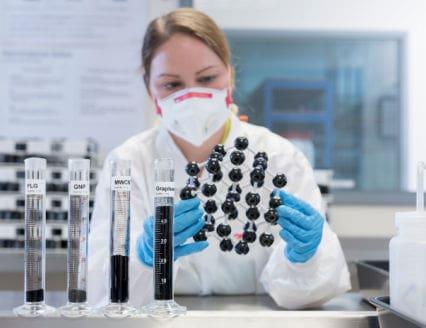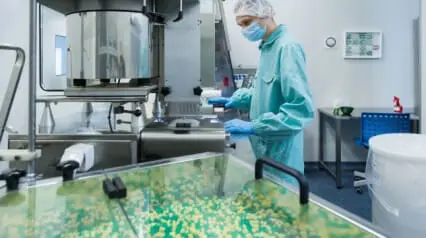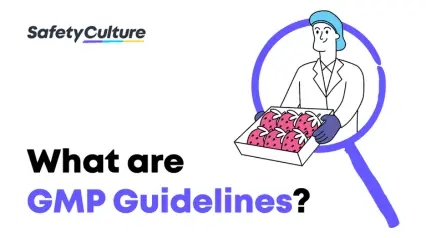What Are Nanomaterials?
Nanomaterials are materials consisting of particles, molecules, or ions with dimensions between 1 and 100 nanometers. They possess unique properties compared to their traditional counterparts because of their atomic-scale size. Because of this size advantage, nanomaterials can be used in many fields, such as electronics, materials science, and consumer products.
Nanomaterials differ from conventional bulk materials because their small size allows them to exhibit unique properties due to the high surface area-to-volume ratio. Examples include:
1. Increased electrical conductivity and higher mechanical strength
2. Making them attractive for use in electronics
3. Sensor technology
4. Biomedical applications
They can also create coatings that make surfaces more hydrophobic or self-cleaning.
Where Are They Found?
Nanomaterials are present naturally in the environment but are also increasingly being produced and used in products. They can be found in various consumer products such as sunscreens, cosmetics, paints, coatings, and food packaging. Medical devices and treatments such as drug delivery systems and cancer therapies also use them.
What Are Their Benefits?
Nanotechnology has the potential to reduce costs, create more robust and lighter wind turbines, enhance fuel efficiency, and conserve energy due to thermal insulation. It can also enhance early diagnosis and treatment of neurological diseases or cancer since some nanomaterials have specific properties that make them ideal.
What Are the Four Types of Nanomaterials?
Inorganic-Based Nanomaterials
Inorganic Nanomaterials (NM), which can be metals or non-metals, oxides, hydroxides, chalcogenides, or phosphates, have a wide range of applications as electronics, photonics, chemical sensors, and biosensors and are vital to our society’s development. Biomedical devices even use them.
Carbon-Based Nanomaterials
Biomedical applications of carbon nanomaterials include treatments, imaging, and diagnostics. Despite this, they still have potentially toxic effects.
Organic-Based Nanomaterials
Organic nanomaterials are generating a lot of attention from many fields, from clinical research to biotechnology. Their versatility allows them to be used for molecular imaging, drug formulation, and image-guided treatments.
Composite-Based Nanomaterials
Composite nanoparticles are nanomaterials composed of two or more nanoscale components with unique physical and chemical properties. These components come together to create a unique interface.
Reduce Safety Risks in Handling Nanomaterials by Using SafetyCulture
Eliminate manual tasks and streamline your operations.
Get started for FREEHow Do They Affect Health and Safety?
There are several studies conducted by The Scientific Committee on Emerging and Newly Identified Health Risks (SCENIHR), the European Commission, and EU-OSHA regarding the proven health hazards associated with several manufactured nanomaterials. Although they don’t always have a toxic effect, it requires further assessment individually while research is still ongoing.
The most prominent consequences of nanomaterials have been recognized in the lungs, encompassing inflammation, tissue devastation, fibrosis, and tumor development. Carbon nanotubes may produce asbestos-like repercussions on the cardiovascular system as well. Nanomaterials have been revealed to penetrate other organs and tissues, including the kidneys, heart, brain, skeleton, liver, and softer matter.
How Does Exposure to Nanomaterials Occur in the Workplace?
During the production stage, workers may come into contact with nanomaterials. Further along the supply chain, more people may unknowingly be exposed to nanomaterials without any safety measures.
Nanomaterials can be inhaled or come into contact with the skin in occupations such as healthcare, laboratories, maintenance, and construction.
How Do You Dispose of Nanoparticles?
Nanomaterial waste is handled the same way as regular waste, without special measures. These nanowastes pose a potentially hazardous or chemically reactive threat, so it’s essential to neutralize them properly before disposing of.
It’s up to the government to have a proactive approach in developing and implementing effective nanowaste management strategies to reduce long-term unintended consequences as much as possible with recycling these materials.
Management of Nanomaterials in the Workplace
Nanomaterials can be highly hazardous when mishandled, so employers must take the necessary steps to ensure their employees are safe. To minimize risks and protect workers, employers should ensure they understand the hazards associated with nanomaterials and how to manage them effectively.
Here are preventive steps employers can take:
Assessment of Hazards and Potential Risks
- When evaluating acidity, basicity, combustibility, or reducing/oxidizing strength, be sure to factor in the potential risks of precursor materials. Thoroughly assess the potential hazards and risks associated with synthesizing nanomaterials.
- Due to their high reactivity, some ultrafine powders increase the risk of fires and explosions, so they must be considered.
- Assess nanomaterial transfer procedures, temperature regulation, and other process regulations.
Selection of Nanomaterials and Substitution
- Whenever possible, swap dry nanomaterials for ones dissolved in solution or adhered to substrates.
Engineering Controls
- The process should be tailored, tested, and operated properly for effective aerosol emissions controls to meet specific synthetic methods and objectives. It should adhere to the standards set by National Institute for Occupational Safety and Health (NIOSH) and Occupational Safety and Health Administration (OSHA).
- When lab equipment and exhaust systems are taken out, remodeled, or repaired, evaluation for nanomaterial contamination is necessary.
- Assessing all equipment used in manufacturing or handling nanoparticles for nanomaterial contamination is recommended before disposal or reuse.
Administrative Controls
- An effective laboratory practice includes administrative controls such as signs, labels, access control, and a chemical hygiene plan with set procedures. These controls are essential in creating viable solutions.
- Use vacuum cleaners with HEPA filers when collecting nanoparticles for testing. Personal Protective Equipment (PPE) should be worn when dealing with spills and maintenance of equipment.
- Follow the guidelines set by the Environmental Protection Agency (EPA) when transporting and disposing hazardous nanoparticles.
Personal Protective Equipment
- Follow standard laboratory safety protocols and use PPE (such as nitrile or chemical-resistant gloves, lab coats, safety glasses, face shields, and closed-toed shoes) to prevent skin contact with nanoparticles or solutions containing them. Check out NIOSH’s Personal Protective Technology Program and General Safe Practices for Working with Engineered Nanomaterials in Research Laboratories for the latest information on appropriate PPE technologies for workforce safety.
Training and Education
- All should receive safety training and education to comprehend the possible workplace threats and health issues, how they can be contracted, how to report health signs, the use of engineering control procedures, and keeping those controls in place. For more information, you can refer to NIOSH’s Protecting Workers During Nanomaterial Reactor Operations.
FAQs about Respirable Dust
The National Nanotechnology Initiative (NNI) facilitates cooperation among 19 US government agencies on issues related to nanotechnology. The NNI, established by law in 2003, strives to leverage government funds and collaborate between agencies to enhance the nation’s economy, security, and quality of life by advancing science-based technology while preserving public health and environmental integrity.
The European Commission’s Joint Research Centre (JRC) in Europe declared that researchers had considered nanomaterials legislation and identified key requirements for enhanced implementation, including safety and risk assessment.
Nanotechnology is regulated by the Food and Drug Administration (FDA) in the US due to its potential risks in medicines and personal care products.
The US, Japan, South Korea, the United Kingdom, and France are the top 5 countries leading nanotechnology research, discovering innovative ways to use nanomaterials.
They’ve established agencies and initiatives dedicated explicitly to nanotechnology research, such as the NNI in the US, the Nanotechnology Knowledge Transfer Network (NanoKTN), and the National Nanotechnology Centre (NNC) in the UK.
Magnets have proven to effectively remove iron-containing nanoparticles from potentially contaminated mixtures, including wastewater. On the other hand, different techniques have been devised to extract, separate, and reuse pricey gold nanoparticles from various liquids.




